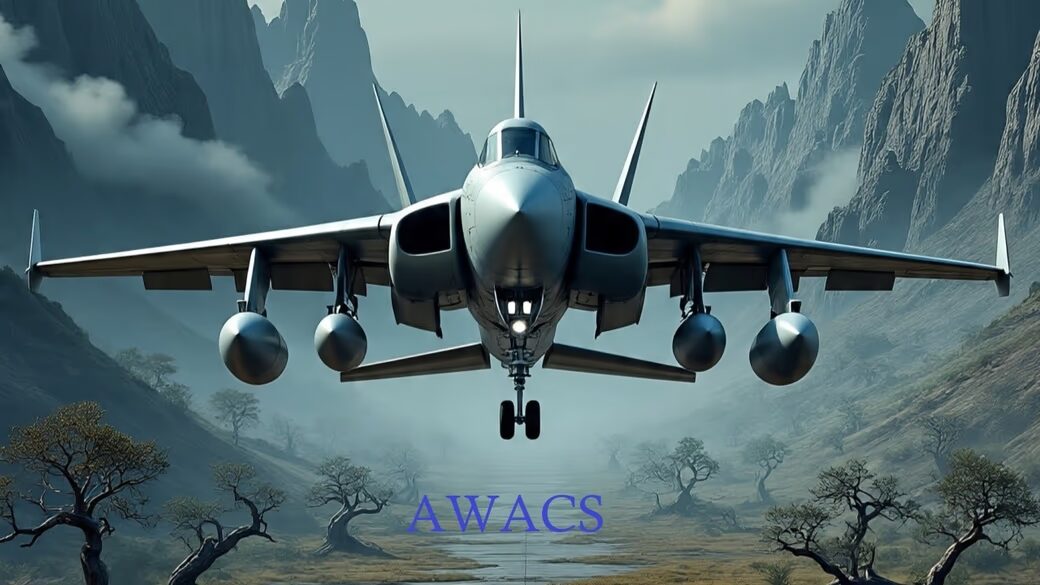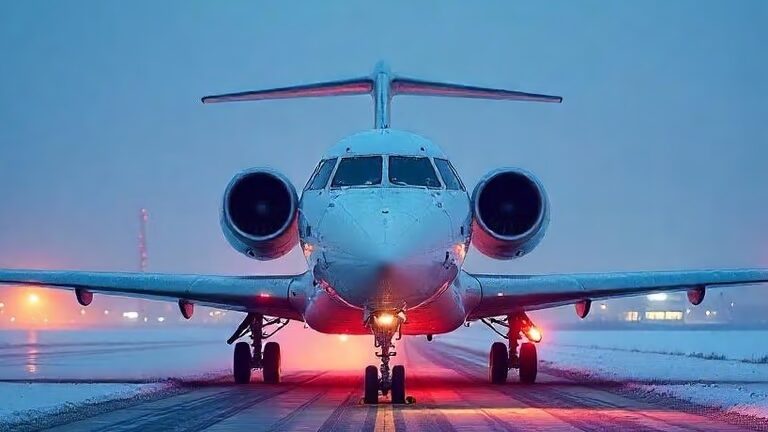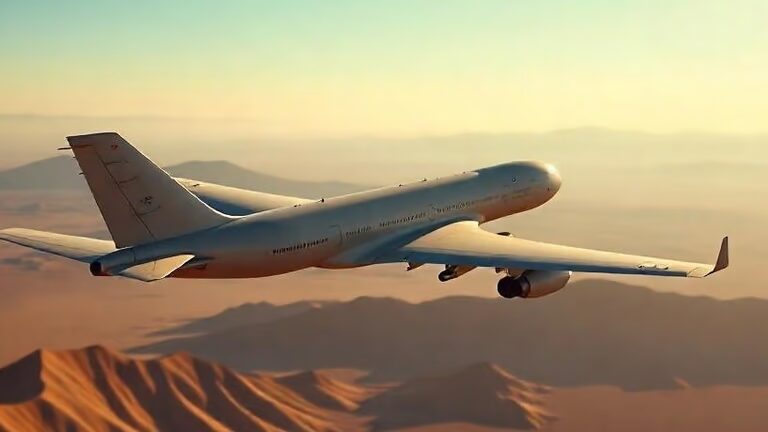
In the rapidly evolving landscape of modern warfare, technology plays a crucial role in shaping strategies, defending territories, and ensuring real-time situational awareness. Among the most significant innovations in aerial surveillance and command capabilities is the AWACS system, short for Airborne Warning and Control System. Often referred to as the “eye in the sky,” this system is not just a piece of equipment; it’s a flying nerve centre that has redefined how air forces around the world perceive and respond to the aerial threats they face.
ALSO READ- Maharashtra’s Rollback of Three-Language Formula
What is AWACS?
At its core, AWACS is an airborne radar system housed on a high-altitude aircraft, capable of detecting and tracking enemy aircraft, ships, and missiles from kilometres away. But it doesn’t stop at surveillance. AWACS units also function as command and control centres, coordinating fighter jets, guiding air-to-air intercepts, and even providing battlefield information to ground forces. These aircraft can monitor a vast area of airspace and relay crucial information in real-time to friendly units, enhancing both defensive and offensive capabilities.
The Birth of the Concept-
The idea of airborne early warning isn’t new. During World War II, rudimentary systems were already being tested. However, the modern concept of AWACS as we know it today truly began to take shape in the 1970s, primarily spearheaded by the United States. The U.S. Air Force introduced the E-3 Sentry, developed by Boeing, which remains one of the most iconic and widely used AWACS platforms globally. Since then, other countries have developed or acquired their own versions, recognising the strategic edge AWACS brings to the battlefield.
How Does It Work?
The most distinctive feature you can find of an AWACS aircraft is the rotating radar dome, commonly known as the “rotodome,” mounted on top of the fuselage. This dome houses advanced radar systems that can scan vast areas—360 degrees around the aircraft—tracking enemy movements in air and sea. The data collected is instantly processed by onboard systems and operators and shared with friendly forces via secure communication channels.
Inside the aircraft, multiple operators sit in front of complex consoles filled with screens, dials, and communication tools. They interpret the radar data, identify potential threats, and issue orders to combat aircraft or ground-based command units. The system can differentiate between friend and foe, track multiple targets simultaneously, and even detect low-flying aircraft trying to evade ground-based radar systems.
Strategic Importance in Modern Combat-
In any military operation—especially aerial combat—information is power. Knowing where the enemy is, what they’re doing, and how fast they’re moving provides a huge advantage. AWACS serves as the brain and eyes of any large-scale aerial operation. Fighter jets, no matter how advanced, have limited radar range and are usually focused on executing tactical missions. AWACS fills the gap by giving a bird’s-eye view of the entire battlefield.
Imagine a scenario where enemy aircraft are trying to penetrate national airspace using low-flying stealth tactics. Ground radars might not catch them, but an AWACS flying at 30,000 feet could detect and track them with ease. It can then coordinate the response—dispatching jets, alerting ground defence systems, and even coordinating with naval fleets if necessary.

Role in Peacetime and Crises-
AWACS isn’t just a wartime asset. In peacetime, it plays a vital role in border patrol, surveillance missions, anti-smuggling operations, and maintaining airspace sovereignty. It’s particularly useful in times of tension when military forces are on high alert but full-scale conflict hasn’t broken out. By monitoring adversary movements from afar, AWACS platforms act as deterrents while also keeping friendly forces ready to respond within seconds.
In crisis zones or during natural disasters, AWACS can even assist in coordination and communication efforts, ensuring relief aircraft are guided properly and airspace is managed effectively.
Global Operators of AWACS-
While the United States is undoubtedly the pioneer, several other nations have embraced AWACS technology. Countries like India, the United Kingdom, France, China, Russia, Israel, and Saudi Arabia have developed or imported AWACS platforms tailored to their strategic needs.
For example, India operates its Netra AEW&CS system based on the Embraer EMB-145 aircraft, developed indigenously by the DRDO. India also uses modified IL-76 aircraft fitted with Israeli Phalcon radar systems. In Europe, the NATO alliance jointly operates a fleet of E-3 Sentries, ensuring shared intelligence and coordination among member states.
Challenges and Limitations-
Despite their advantages, AWACS systems are not without challenges. First, they are high-value assets—large, slow-moving, and expensive to maintain. Their sheer size makes them vulnerable to enemy missiles, especially in contested airspaces. That’s why AWACS aircraft are typically escorted by fighter jets for protection.
Secondly, developing an indigenous AWACS program is technologically complex and financially demanding. The radar systems, onboard electronics, software, and aircraft platform must all work in perfect harmony, which requires cutting-edge research, manufacturing capabilities, and constant upgrades.
Moreover, some electronic warfare techniques, such as jamming and spoofing, pose serious threats. Adversaries with sophisticated electronic countermeasures can try to interfere with AWACS communication or radar signals. Hence, staying ahead in the EW (Electronic Warfare) game is crucial for AWACS survivability.

The Future of AWACS-
As warfare becomes increasingly digitised and multi-domain, the role of AWACS is also evolving. Next-generation systems are being designed with artificial intelligence, autonomous decision-making, and stealth features. The aim is to reduce crew size, enhance reaction speed, and increase survivability.
Some countries are also exploring drone-based AWACS platforms—unmanned aerial vehicles equipped with miniaturised radar systems that can perform similar functions at lower costs and reduced risk. Additionally, integration with satellite networks and cyber defence systems will make AWACS even more formidable.
Conclusion-
The AWACS system is more than a military gadget; it represents a philosophy of proactive defence and real-time awareness. It bridges the gap between the fog of war and strategic clarity, allowing nations to respond faster, smarter, and more effectively to aerial threats. As geopolitical tensions simmer in many parts of the world, having an AWACS capability is akin to having a watchtower that sees beyond the horizon.
In an age where milliseconds can determine victory or loss, the silent guardians of the sky—AWACS—continue to shape the outcome of conflicts not just by firepower, but by foresight.
